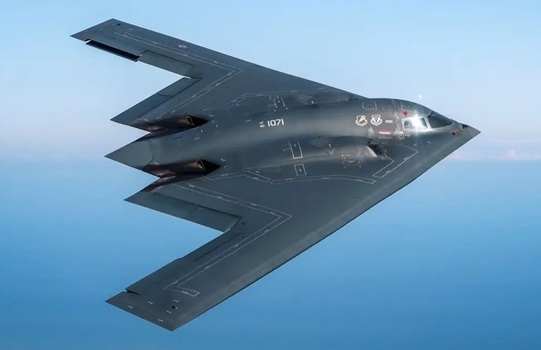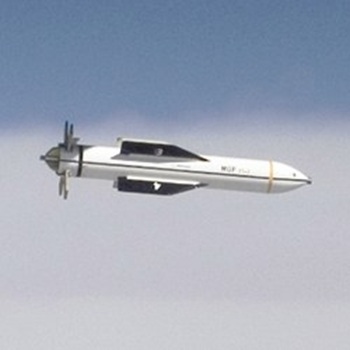By ClayCoNews staff
MANCHESTER, KY (June 22, 2025, 2:32 AM EST) — On Saturday, June 21, 2025, the United States launched a series of airstrikes targeting three key Iranian nuclear facilities—Fordow, Natanz, and Isfahan—marking a significant escalation in the ongoing Israel-Iran conflict. President Donald Trump announced the strikes, describing them as a “spectacular military success” that “completely obliterated” Iran’s principal nuclear sites, aimed at crippling Tehran’s nuclear program.

A Northrop Grumman B-2 aircraft in flight, photo by US Air Force Senior Airman Joel Pfiester
The operation involved U.S. Air Force B-2 Spirit stealth bombers, which deployed multiple 30,000-pound GBU-57 Massive Ordnance Penetrator bombs, known as “bunker busters,” designed to penetrate deeply buried targets like the Fordow facility, located 250 feet underground near Qom. Navy submarines also fired 30 Tomahawk cruise missiles at Natanz and Isfahan, according to U.S. officials. The B-2s, operating from Whiteman Air Force Base in Missouri, flew a 37-hour nonstop mission with mid-air refueling. Trump confirmed all aircraft returned safely, congratulating U.S. forces on Truth Social.
The strikes follow Israel’s earlier attacks on Iranian nuclear and military targets, which began June 13, aimed at delaying Iran’s nuclear ambitions. Israel’s Foreign Minister Gideon Saar claimed the campaign set Iran’s nuclear program back “two or three years.” Iran maintains its nuclear program is for civilian purposes, but Western intelligence reports, including a May 31, 2025, International Atomic Energy Agency (IAEA) assessment, noted Iran’s increased enrichment of uranium to 60% purity, nearing weapons-grade levels.
Iran condemned the U.S. attacks as “outrageous,” with its Foreign Minister warning of “everlasting consequences” and reserving “all options” for retaliation. Iranian ballistic missiles struck Israel on June 22, wounding at least 16 people in Tel Aviv and Haifa, prompting Israel to shut its airspace and cancel school nationwide. Iran’s state-run IRNA news agency acknowledged the attacks but reported “no signs of contamination” at the targeted sites. The IAEA confirmed no off-site radiation increases but is continuing to monitor the situation.
The U.S. strikes have drawn mixed international reactions. Cuban President Miguel Díaz-Canel condemned the bombings, warning of regional escalation, while a mass rally in Baghdad’s Kadhimiya district expressed solidarity with Iran. Diplomatic efforts, including planned U.S.-Iran talks in Oman, collapsed after Israel’s initial strikes. Trump, who had previously pushed for a nuclear deal, warned Iran of further strikes if it does not pursue peace, while demanding Tehran’s “unconditional surrender” in earlier statements.
The U.S. has braced for potential Iranian retaliation, with over 40,000 U.S. troops stationed in the Middle East now on high alert. Law enforcement in New York and Washington, D.C., increased security at religious institutions following the strikes. The conflict, now in its second week, shows no immediate resolution, with both sides signaling readiness for further action. ClayCoNews will continue to monitor this developing story and provide updates as new information emerges.










